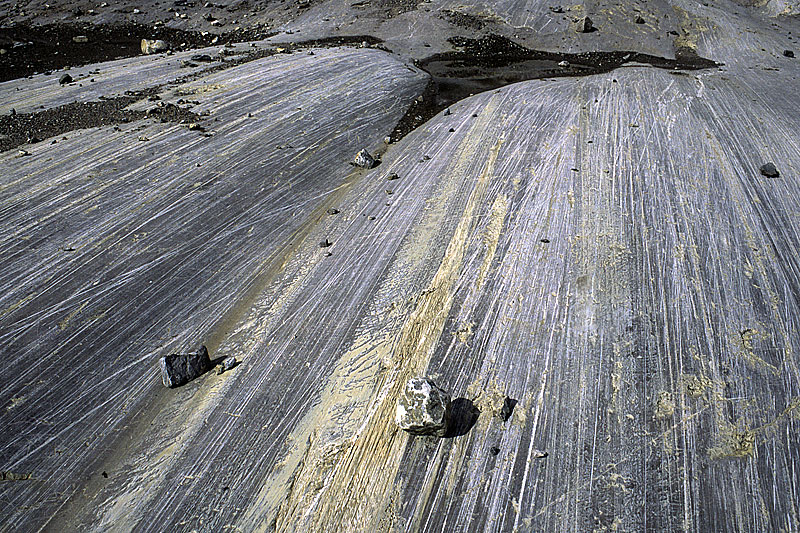Striae and roches moutonnéesThe forefield of Glacier de Tsanfleuron is remarkably rich in erosional features such as striae, roches moutonées, elephant backs and also various karst phenomena. Due to its small slope the terrain is easily accessible and offers a multitude of almost surrealistic shapes and structures. |
 Various rock surfaces near the glacier margin are highly polished and are able to reflect sunlight almost like a mirror. |  This rock slid, perhaps during a storm, from the top towards the observer and left faint scratch marks which run in a different direction from the glacier's striae. |  Closeup of remarkably well developed striae in dark limestone. |  Striae running in different directions indicate that the ice did not alway flow in exactly the same direction. |
 The glacier receded from these rocks only very recently; therefore the striae apper very fresh. The stone on the top left is the same as in the second photo on this page. |  Water flowing under the glacier had considerable amounts of carbonates in solution. In cavities, calcium carbonate was deposited forming yellow crusts. |  Roches moutonnées, meltwater channels and small lakes in the forefield of Glacier de Tsanfleuron. Sanetschpass (col) in the background. |  The mineral limonite is precipitated from a stagnant pond of meltwater. |
 Smooth limestone surfaces near the glacier terminus refelct sunlight at least at low angles of incidence. |  Some of the deeper striae have, after their formation, been filled by carbonate precipitates. |  Sinkhole in the limestone bedrock, through which glacier meltwater would have flowed. |  Meltwater from the glacier follows channels which were formed when this area was still under ice. |
| Photos Jürg Alean August 2004 |